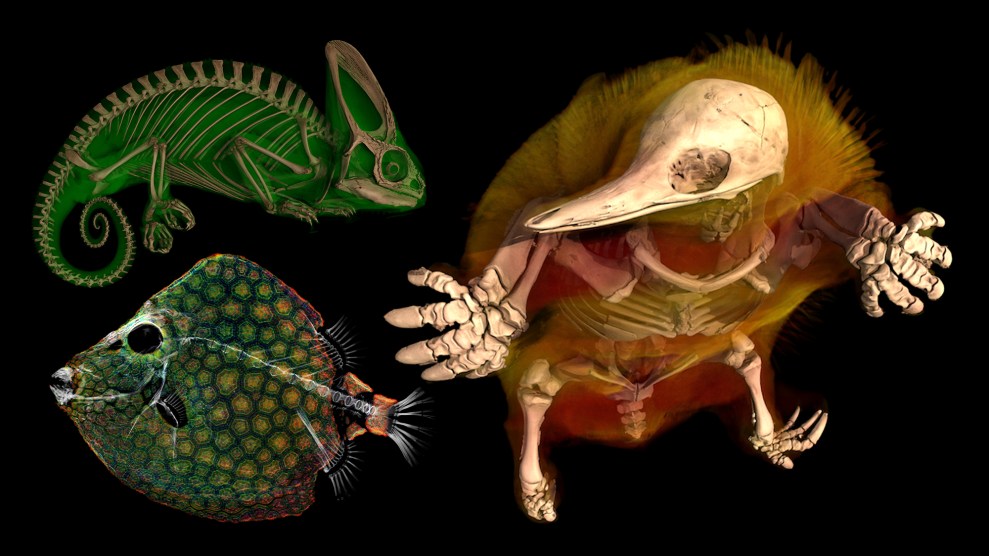It’s different at the extremes. To begin with, the Arctic is warming nearly twice as fast as the global average, a phenomenon known as Arctic amplification. Northern sea ice, melting at record rates throughout the last decade, disappeared in the summer of 2007 more quickly and completely than ever before. Large areas that didn’t melt thinned to only 3.3 feet, 50 percent less than in 2001, another thin year. Perennial ice, the kind that survives from year to year, shrank by half in the 12 months leading up to February 2008—that’s 965,300 square miles, an area 1.5 times the size of Alaska. Until a couple of years ago, climate models projected summer Arctic ice would survive through 2100. Now Wieslaw Maslowski of the Naval Postgraduate School forecasts the first ice-free Arctic summer by 2013, and likely sooner. Suddenly the unthinkable is probable.
Greenland, the planet’s other motherlode of ice after Antarctica, was believed too massive to seriously melt anytime soon. But this northernmost land on Earth experienced record ice losses between 2002 and 2006, as much as 60 cubic miles yearly, enough to swell global sea levels by 0.08 inches annually. In 2007, bad got worse, and Greenland lost an area of ice equivalent to more than twice the surface-size of the United States.
More worrying even than the numbers are the mechanisms. Snow melted and refrozen at high elevations becomes four times more absorbent to thermal energy than unthawed snow. Such high-altitude melt increased 150 percent above the average in Greenland in 2007. At lower elevations, researchers discovered a startling correlation between warming air temperatures and, a mere two weeks later, thawing underneath Greenland’s glaciers. “This indicates that the meltwater from the surface must be travelling down to the base of the ice sheet, through over a mile of ice, very rapidly,” says Dorothy Hall of NASA’s Goddard Space Flight Center. Once there, meltwater lubricates the rate of flow of the glaciers and of icebergs calving into ocean—the recipe for a shrinking glacier.
Until recently, the default explanation for the Arctic amplification was albedo—the phenomenon of white snow reflecting heat outward, dark earth or water absorbing it, with more melting leading to more heating in a dangerous positive feedback loop. However, a recent analysis published in Nature by Rune Graversen of Stockholm University finds that heating at ground level in the Arctic is less severe than what occurs 1.25 miles aloft, making albedo a less likely factor. He suggests that warm air from the tropics is being stormed north via an increasing number of (likely climate-change-induced) hurricanes, accounting for up to 25 percent of the Arctic amplification.
Which begs the question of whether southern hemisphere tropical cyclones are transporting thermal energy towards Antarctica—the supposedly impregnable ice citadel?















